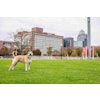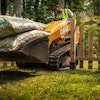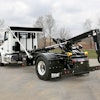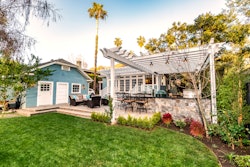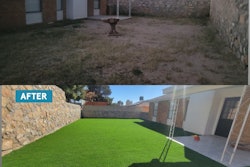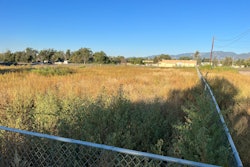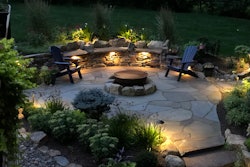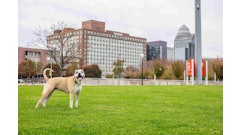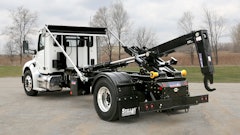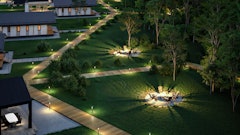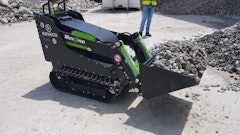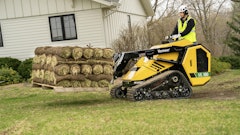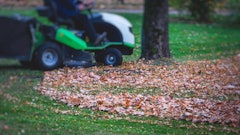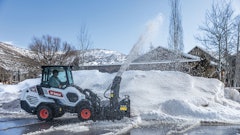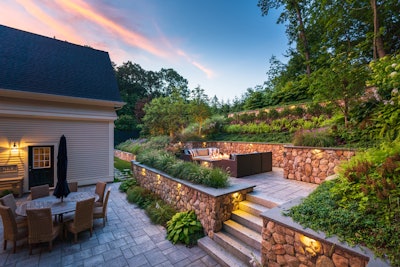
From the moment Brian Mulvehill and his design team were hired to transform a backyard in Wellesley, Mass., they were told to do virtually anything they needed to in order to ensure it became fully functional.
When Mulvehill, ASLA, design division manager and landscape designer at Sudbury, Mass.-based Lynch Landscape & Tree Service, began working on the project in April 2019, the yard only featured a small patio and a very steep, wooded area, leading to a lot of empty, unusable space, but he immediately noticed the property had considerable potential, as he knew his renovation options were practically limitless.
“Since the clients were so open minded, in terms of what their expectations were, it was a really fun project to flex our creative muscles on, as we strived to truly re-invent their backyard,” Mulvehill says. “Eventually, it became the ultimate space for entertaining and relaxing.”
In all, the project, which was built by six Lynch Landscape & Tree Service design team members and masons, was completed in five months. Utilizing crane and bucket trucks for tree work, along with excavators, skid-steers and dingos for construction projects, the team sought to achieve two key objectives. First, it was focused on converting a completely unusable backyard into a dream outdoor living space, in which the clients could host and entertain their friends and family members. The second objective was much more functional—to solve various drainage issues that the home’s builder had never addressed, which were leading to water damage in the basement.
“The biggest challenge for this space was also our greatest opportunity,” Mulvehill says. “Although the slope was significant, it facilitated the idea of a multilevel terrace vision for the backyard.”
Using the backyard’s topography to their advantage, the Lynch Landscape & Tree Service team members were able to carve new spaces into its hillside via a system in which they built retaining walls and steps. Since the spaces had a “tucked in” nature, so to speak, according to Mulvehill, they ultimately created a cozy and secluded experience for the clients, along with various vantage points that could be used to enjoy the backyard’s views. Additionally, the team utilized drought-tolerant plantings to cover all remaining slopes with masses of color and texture, thereby softening any of the backyard’s hardscapes.
“Functionally, these walls and plantings also became part of the solution to the clients’ drainage issues,” Mulvehill says. “By regrading, terracing and slowing down stormwater runoff, we were able to strategically reroute stormwater, which was heading toward the clients’ house, through a series of dry wells.”
While completing the transformation, the team’s craftsmen and operators had to navigate several machines of various sizes, often in tight spaces and amidst some precarious scenarios. In fact, after encountering some issues with the backyard’s terrain, the team members decided to create construction roads and switchbacks in the area in order to move materials in and out of it. Furthermore, after removing all stumps and completing the subgrading, the team chose to finish the remainder of the renovation in a sequence of five zones, beginning with the bottom left of the backyard and then continuing the rest of their projects in a clockwise sequence.
“We were always thinking one, two and three steps ahead. With no access for large loaders, staging areas or tri-axle trucks, the goal was to reduce material import and export as much as possible throughout the project, outside of the necessary structural aggregates that were brought in,” Mulvehill says.
As the team members conducted a wall excavation, they would backfill the previous wall or use their materials for new switchbacks. All existing subsoils in the backyard were clean, free-draining and structural bank gravel, ensuring the team was able to complete its excavating projects without any concern of moisture trapping clay.
“Ultimately, once it was time to finish grading and preparing beds with composted loam, we still had to haul out some excess, but we were able to do so over the course of just a few 10-ton loads that we needed at another local project anyway,” Mulvehill says.
At the end, the clients’ open mindedness certainly paid dividends.
“They fell in love with their formerly cramped, mostly unusable backyard,” Mulvehill says. “To see them utilize it the way we dreamed of—with a full outdoor kitchen space, firepit seating area and bocce ball courts, all complimented by beautiful plantings—was awesome!”
